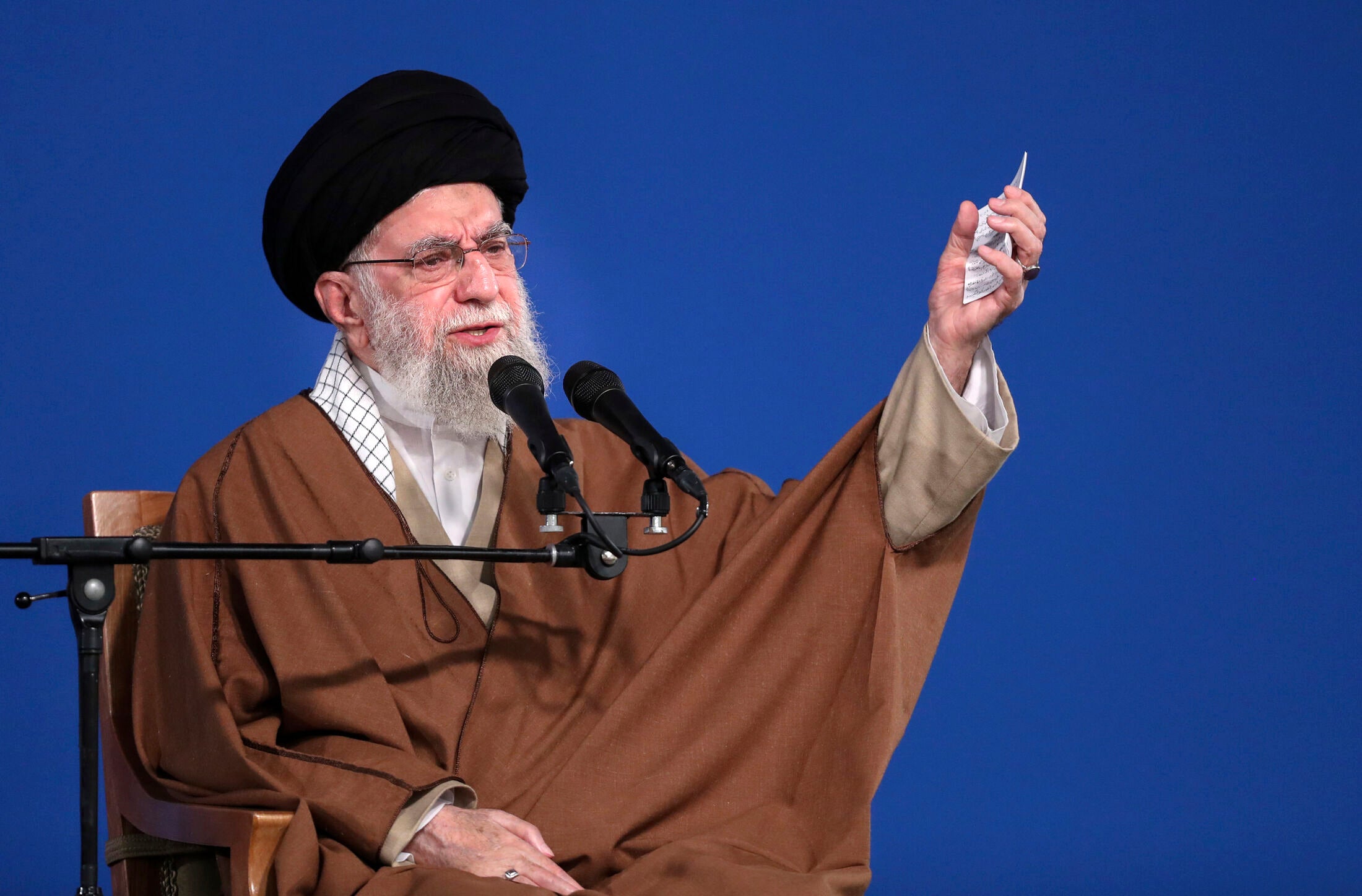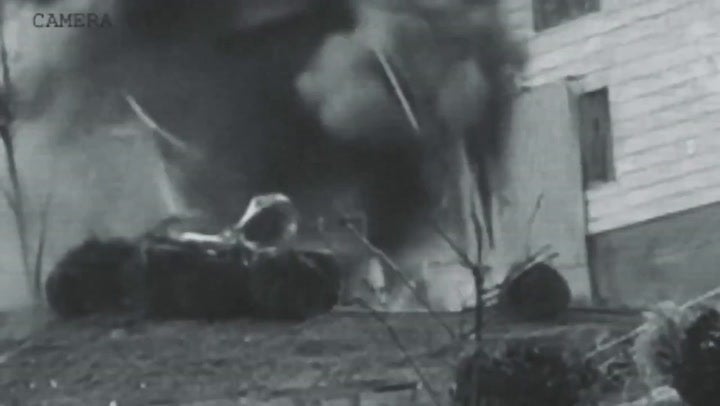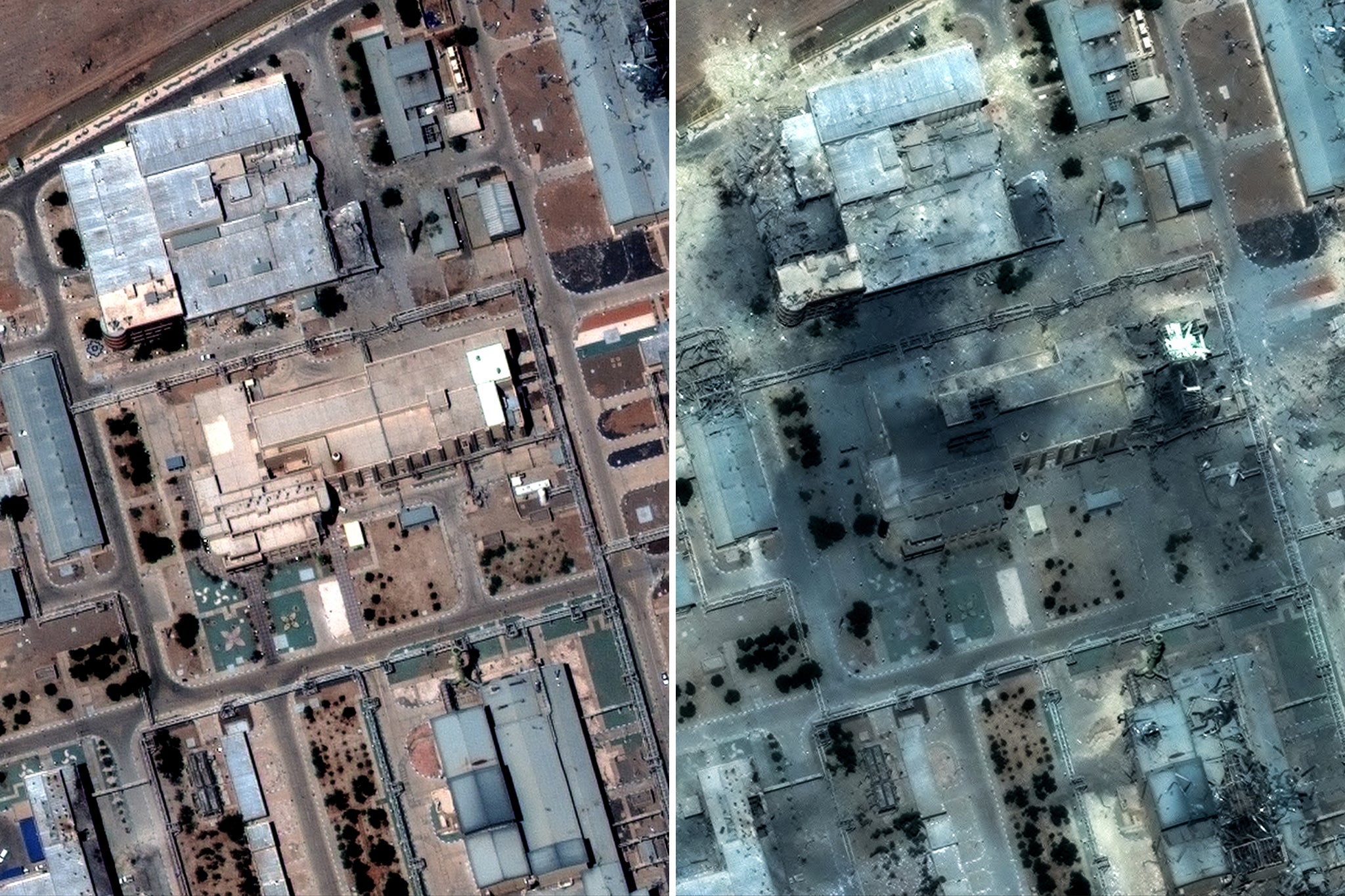Hiding in a secret bunker, speaking indirectly to commanders through a handful of trusted aides, naming a string of successors to his increasingly battered military command — and significantly, to his own position— and avoiding anything trackable or electronic.
This is said to be the shrinking world of Iran’s supreme leader, who has ruled the country with an iron fist for nearly four decades, as the nation buckles under the largest attacks on its soil since the war with Iraq in the 1980s.
According to US officials, Donald Trump has vetoed Israeli plans to take out Ayatollah Ali Khamenei. But the danger of death significantly spiked when the US entered the fray yesterday, unleashing the biggest conventional bombs in its arsenal on Iranian nuclear facilities — including, according to UN nuclear watchdog chief Rafael Grossi, causing “very significant” damage to the Fordow uranium enrichment plant, dug into the side of a mountain.
There have been unconfirmed rumours swirling inside Iran that its Assembly of Experts — the body empowered to appoint a supreme leader — held an emergency session. The New York Times, citing Iranian officials, reported that Khamenei has even named three senior clerics as candidates to succeed him, in a telling indication of just how much his rule — and even his life — is under threat.

You could also read into the fact that Ayatollah Khamenei has not spoken publicly since the US attacked Iran directly. He last addressed the world five days ago, telling the US president: “It isn’t wise to tell the Iranian nation to surrender.”
“The harm the US will suffer will definitely be irreparable if they enter this conflict militarily,” he warned.
But the question remains: what options do the Iranian regime — or more specifically, the supreme leader - actually have? Particularly given the external threat from Iran’s skies (which Israel now claims it controls) and the internal threat from powerful factions within the country’s Islamic Revolutionary Guard Corps?
American outlets have reported that Iran threatened to activate sleeper cells in the US in messages to Trump if Washington entered the melee.
On Monday, explosions lit up the skies above Qatar which although an ally to Iran, is also host to America’s largest base in the region. Meanwhile military sources at Ain al-Assad base in western Iraq, which hosts US troops, also reported a missile attack, adding that air defence systems had been deployed .
The US’s 24-hectare Al-Udeid air base in the desert outside of Doha is host to around 10,000 troops and the forward headquarters for U.S. Central Command, which directs U.S. military operations in a huge swathe of territory stretching from Egypt in the west to Kazakhstan in the east.

Furious, Doha released a statement calling the attacks an act of “brazen aggression” and “a flagrant violation of [Qatar’s] sovereignty”, warning it reserved the right to retaliate.
Iran claimed responsibility for the “devastating and powerful missile attack”. But also appeared to acknowledge the sensitivities with its top security body reportedly saying the action did not post any threat to “our friendly and brotherly” neighbour and that the base was far from urban centres.
There were reports that Qatar had been pre-warned - just under an hour before the missiles soared through their skies, Doha closed its airspace. Many believe it was a face saving option.
But surely the loudest noise across the Middle East — rocked by daily explosions — is the deafening silence in recent days Iran’s proxies and allies in the region, that in the past have acted. They include the Popular Mobilisation Forces (PMF) in Iraq, Hezbollah in Lebanon, and the Houthis in Yemen.
Once thought to be the powerful, long-fingered, and unshakeably loyal defenders of Iran against its Western foes, these groups have been so quiet they have inspired a slew of memes comparing them to puppies, boyfriends that ghost, and Homer Simpson disappearing into a hedge.
Reports from within Iran, shared with The Independent, indicate Tehran has been penning directives to these allies to activate against the US. Iran-aligned Iraqi armed group Kateab Hezbollah had warned it would resume attacks on American troops in the region if the United States intervened.
On Monday Reuters reported that oil majors including Eni, BP, and Total Energies operating in Iraqi oilfields have evacuated a number of their foreign personnel possibly preempting an attack.
But experts question whether groups like Kateab Hezbollah or the PMF would be willing to really go all out and attack US or western assets in this environment.
Last year, Israel’s unprecedented assault on Lebanon took out the most senior leadership of Hezbollah, including its previously untouchable leader Hassan Nasrallah, gutting the group’s capabilities.

The various Iran-backed armed factions in Syria, reeling from Hezbollah’s defanging, were later sent packing — or into the shadows — when their ally, former Syrian president Bashar al-Assad, was ousted by Islamist-led Sunni opposition groups that now rule most of the country.
In Iraq, despite US intelligence reports suggesting Iran-backed militias could be preparing attacks on US bases, nothing concrete from these groups has so far materialised.
These forces will no doubt have watched with horror as Iran’s most senior military commanders have been eliminated — including newly appointed successors, one just four days into his new job as chief of staff.
“[Iran’s allied militias] want to stay out,” says Bronwen Maddox, CEO of the think tank Chatham House, speaking from Jordan — where missile fire between Iran and Israel crosses overhead.
“I think the US has a separate deal with the Houthis, and the others are not very effective anymore,” she added.
Maddox believes that Ayatollah Khamenei might want to wait and see if Israel de-escalates - and may even try to renegotiate with the US. In a worst case scenario he has some very alarming alternatives, including the quite literal nuclear option. The biggest fear, she adds, is the deployment of a dirty bomb, given Iran reportedly has enough enriched uranium to build around nine weapons.
There is also the possibility that Iran strangles the strategic Strait of Hormuz, that is the world’s busiest oil shipping channel. At its narrowest point, the strait’s shipping lanes lie entirely within Iran and Oman's territorial waters, giving Tehran a considerable hold. Blocking it would have profound consequences for the global economy.
Whatever happens, Israel - and possibly Donald Trump - appears to be pushing for regime toppling, even if it’s unclear how that could be achieved through airstrikes alone. Benjamin Netanyahu has repeatedly called on Iranian civilians to rise up against their leaders — most recently last week, telling Iranians in English that Israeli airstrikes were “clearing the path to achieve your objectives, which is freedom.”
That said even if all of Iran’s military leaders were wiped out, there is no effective opposition poised and prepared to take over all arms of the state. But for Israel, full regime change, in the traditional sense, may not be entirely necessary.
For Israel, ousting, destroying, or defanging the current leadership—and allowing a messy vacuum to follow—may be just as effective if the only goal is to prevent Iran’s nuclear programme from continuing.
Chaos is a win.
US-Iran latest: Trump claims ‘total ceasefire’ agreed between Israel and Iran
Trump administration plans to rescind rule blocking logging on national forest lands
US strikes on Iran add to global travel disruptions and flight cancellations
Oil sells off as traders calmly look beyond the bombs in the Middle East
Explosions heard after Iran launches missile strike on US base in Qatar
How the Israel-Iran conflict became a battleground for apocalyptic religious extremes







